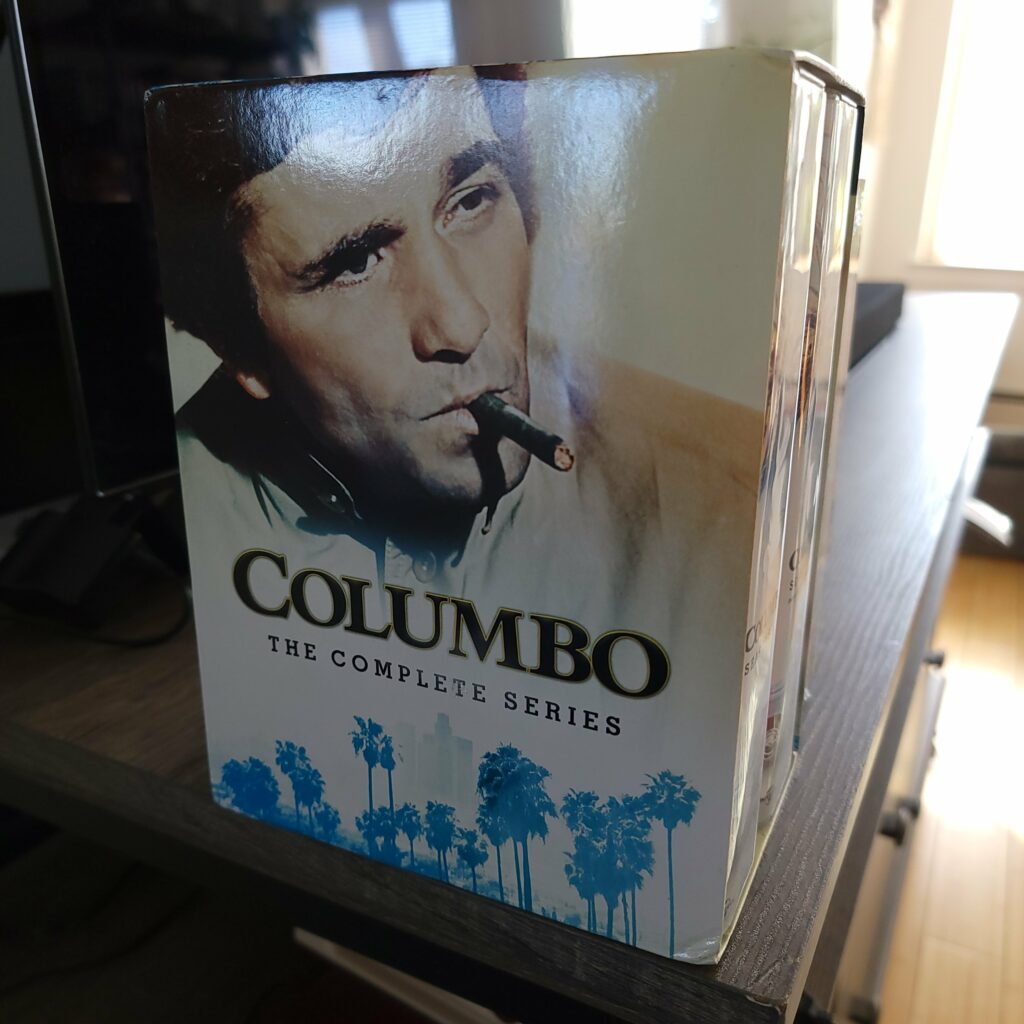Maybe it’s a midlife crisis kinda thing, I don’t know, but I’ve been enthralled by rediscovering the television shows of my youth. The stuff of syndication dreams and reruns paradise from the era of the CRT.
They say the present is the golden age of TV, with stuff like Breaking Bad and Game of Thrones playing out like extended multi-chapter movies rife with adult content and Hollywood blockbuster level special effects. The scope and scale of what being a TV show means has changed radically over the last couple decades.
That’s all fine, and I’ve enjoyed the ride of mobsters and dragons and Star Wars bounty hunters as much as anyone. But I’ve found my mind wandering back to what TV used to be, what TV shows were for me growing up. It was a different end of the spectrum, a different media although almost, with its own standards and syntax and mode of delivery.

My favorite right now is Columbo. Peter Falk’s dishevled earth-toned detective, a Russian Jew playing an Italian cop. Columbo might be the ultimate 20th century American TV icon. And its emblematic of the joy of 70s and 80s TV.
There’s obviously a nostalgia factor here, that cursed word that is supposedly the Achilles heel of an entire generation, keeping us bound in shackles of Optimus Prime Underoos and highly articulated Ninja Turtles. I don’t quite buy into that as something especially new or all that concerning. 30 years ago, middle aged people pined for westerns and Howdy Doody. Before that, people were likely dreaming of favorite vaudeville acts or hoop rolling.
Looking back is nothing new. Ancient Romans kept shrines to their ancestors and venerated domestic Lares as a way to keep the spirits of relatives present in their daily lives. Cultures the world over burn incense or light ceremonial candles to remember. For me, I watch Columbo and remember the big ashtrays of Benson & Hedges 100s, the laughs, and the ceaseless commentary of my ancestors since passed. In 20th century America, there was no greater altar than the family room TV.
So there’s that. The memories, and the remembering of forgotten ones. Like I said, midlife crisis stuff.
In these shows the production values are grounded by today’s standard. Lots of offices, hotels, and the occasional Southern California estate. The mundane yet often fascinating settings provide the perfect chessboard for the character-driven dramas to play out. Shipping magnates, senatorial candidates, mob bosses, and CIA agents alike square off with the seemingly befuddled and cash-strapped everyman homicide detective.
These are only on TV kinds of situations, an alternate reality unto itself. One that looks like our world, sounds like our world, but has a layer of the fantastic dropped throughout.
Columbo and similar shows like The Rockford Files, Magnum P.I., Miami Vice, etc. don’t rely too much on overextending mythologies, multi-part season-long development arcs, or build-ups to any sort of endgame situations. Like Bronze Age comics, these are mostly one-and-done affairs, with everything established and executed within a tidy and efficient one-hour runtime. It’s done with expert subtlety.
You never need to have seen any episode of these shows to every understand any given entry. Everyone, including the leads, are introduced, and the pieces set in motion for an in-the-now story. It’s not whispers in the dark dropping lore that leads up to a season finale or a spinoff show. These are stories, in living color, delivered wit and style.
Another aspect of these shows is that the leads are actually likable. The key to their massive popularity and pop culture success- these are downright lovable characters that you like spending time with. These are evil queens bent on gaining revenge or something. Columbo gets sticker shock when repairing his car. Jim Rockford famously charges $200 per day, plus expenses, but rarely gets paid or receives payment on time.
Even the glossier, handsomer, and cooler ’80s detectives like Magnum and Miami Vice’s Crockett are grounded with wartime PTSD and checkered personal relationships that include messy divorces. A lot of times these are characters in their wilderness years, camped out in some exotic locale, trying to make the best of things and filling the emptiness with sports cars and pet alligators. The gig, the action, is their main commitment. And we get to ride along with them, rooting for them in their only-on-TV underdog status.
The bevy of writers, directors, actors, and producers who frequent these shows is super fun. “Oh hey, that guy!” is a common refrain as I watch these things. An enormous amount of talent, from Steven Spielberg to cult favorites like Patrick McGoohan, show up and do awesome work. And hundreds of others. Maybe TV was great all along?
I’ve been gobbling up these old TV shows on physical media, mostly DVD with some Blu Ray sets sprinkled into the mix. Streaming is omnipresent, convenient, and I subscribe to a half dozen of the leading providers. But I worry about its future, and the future of censorship, either intentional or unintentional. I’m one of those weirdos who never got rid of his DVDs, and adding to the collection in 2023 has been a pleasant and unexpected surprise. I like having these things on the shelf, this archive of TV I know and love preserved and accessible no matter which way the streaming winds blow.
I keep these shows on in the background as I work and it warms by 20th century boy heart like a little Trinitron fireplace. The potency of the storytelling and the humanism at the root of these shows makes them endlessly enjoyable and, in an odd way, inspirational. Stories about people, for people. What a concept.